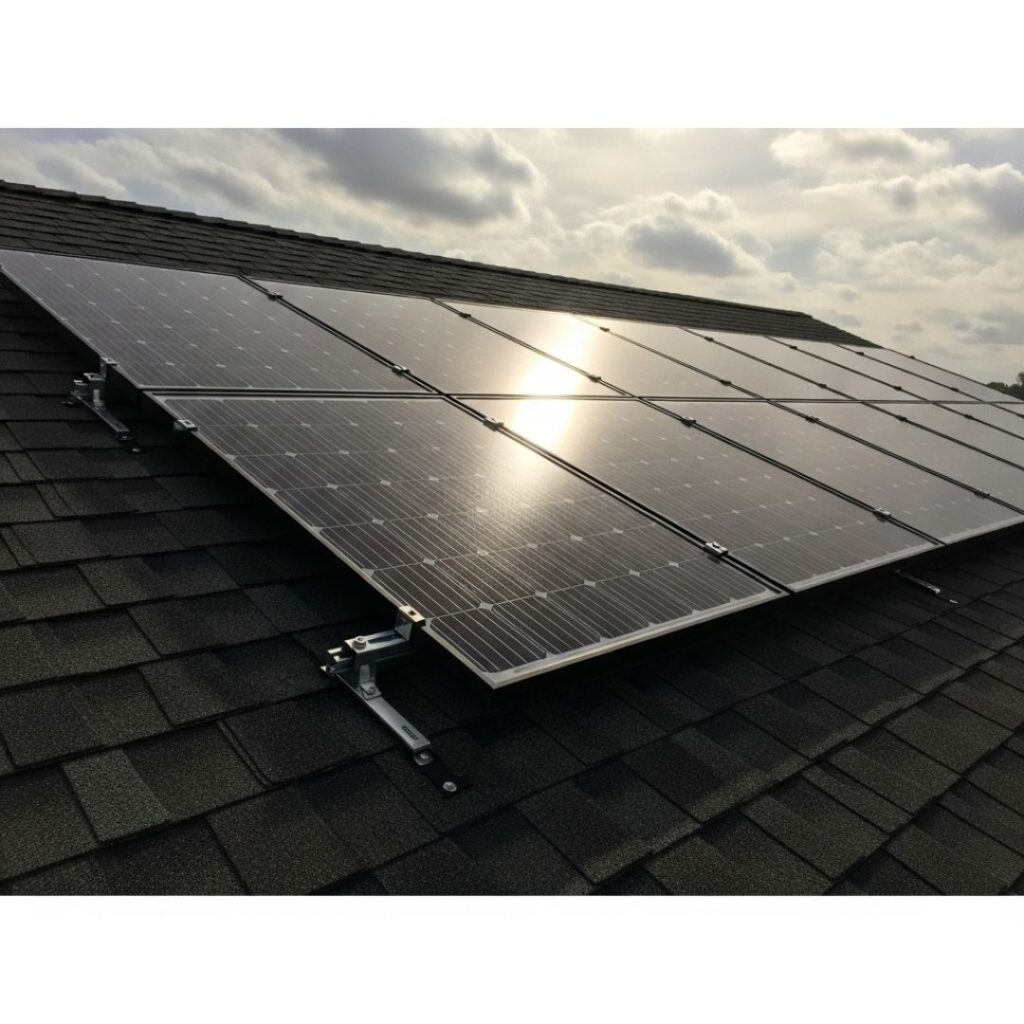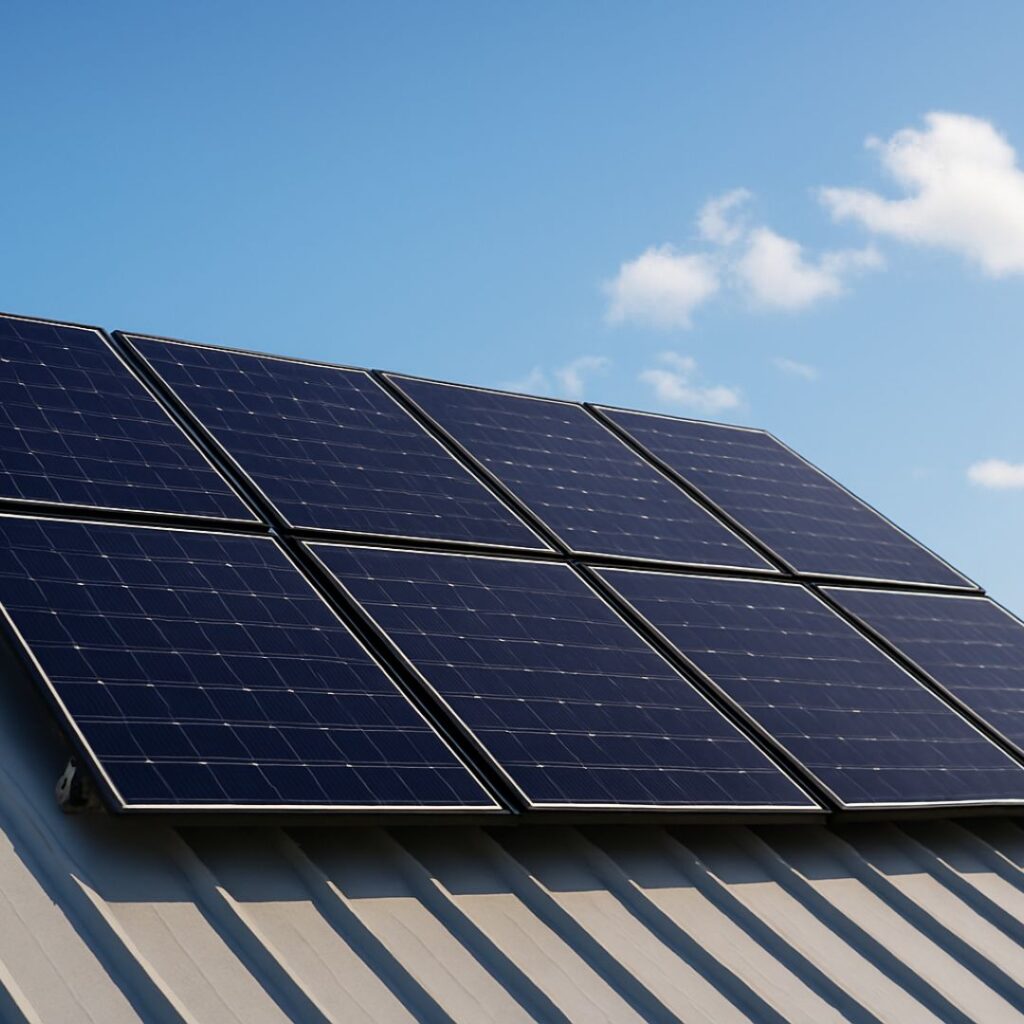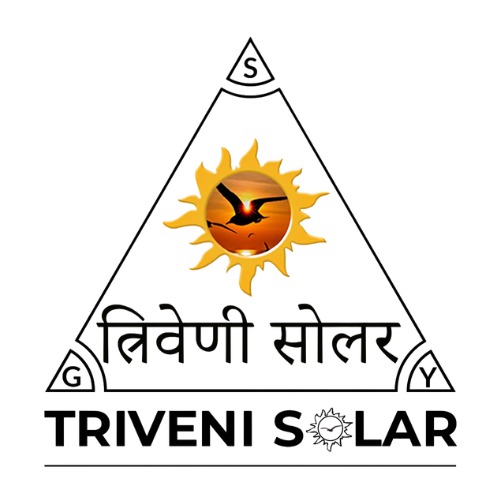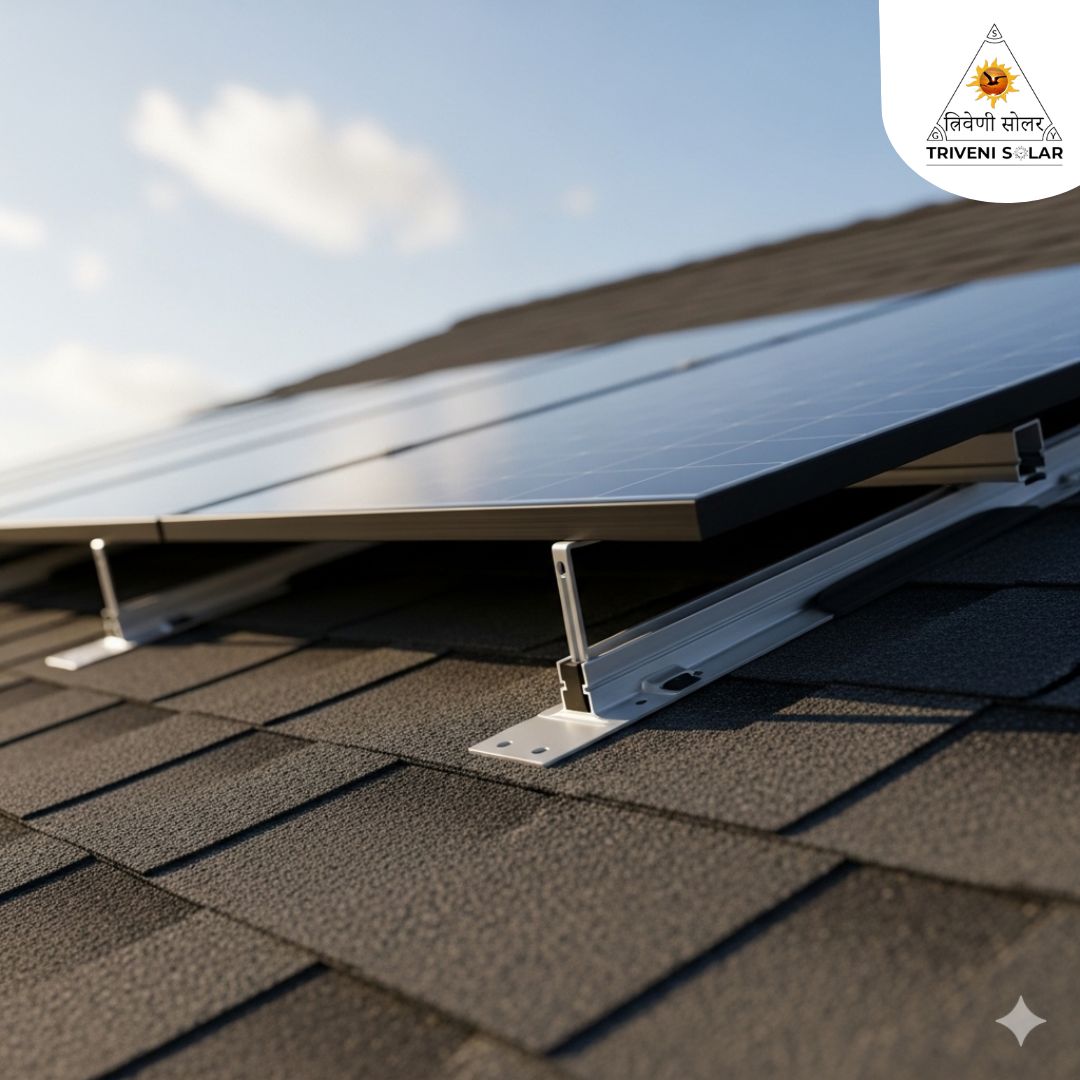Rail-less mounts simplify solar panel installations by eliminating rails, reducing costs, and providing a sleek, durable, and low-profile system. Ideal for residential and commercial rooftops, these mounts enhance efficiency and aesthetics while maintaining long-term reliability.
Table of Contents
- Introduction: Why Rail-less Mounts Are the Future of Solar
- What Are Rail-less Solar Mounts?
- Benefits of Rail-less Mounts
- Types of Rail-less Mounts
- Technical Specifications
- Ideal Applications
- Rail-less vs Traditional Rail Systems
- Installation Guide
- Maintenance Tips
- Case Studies & Success Stories
- Frequently Asked Questions (FAQs)
- Why Choose SolarStructure for Rail-less Mounts
- Conclusion & CTA
Introduction: Why Rail-less Mounts Are the Future of Solar
The solar energy industry has witnessed tremendous growth over the past decade. As demand increases, the need for efficient, cost-effective, and aesthetically pleasing solar installation solutions has never been greater. This is where railless mounts come into play.
Rail-less mounting systems are revolutionizing how solar panels are installed, offering streamlined setups, reduced material costs, and sleek designs. Whether for residential rooftops, commercial buildings, or large-scale solar farms, these systems deliver superior performance while simplifying installation.
In this blog, we’ll explore everything about rail-less mounts—their benefits, applications, technical specifications, installation process, and why SolarStructure is your trusted partner in solar solutions.

What Are Rail-less Solar Mounts?
How They Work
Unlike traditional solar mounting systems that rely on heavy rails to hold panels in place, rail-less mounts attach solar panels directly to the roof structure using specially designed clamps or brackets. This eliminates unnecessary components, reduces weight, and speeds up installation.
Key Features
- Direct Panel Attachment: Panels are secured directly without rails, ensuring stability and minimal material use.
- Reduced Components: Fewer parts mean less complexity, faster installation, and lower costs.
- Lightweight Design: Minimizes structural load on rooftops, making it safe for various building types.
- Aesthetic Appeal: Provides a sleek, low-profile finish that complements modern architecture.
Benefits of Rail-less Mounts
Cost Savings Without Compromise
Eliminating rails reduces material expenses significantly. With fewer components, you save on shipping, storage, and labor costs, all without sacrificing durability or safety.
Faster and Easier Installation
Fewer components and a simplified design result in quicker installations. Installers can save hours, sometimes even days, compared to traditional rail-based systems. This is especially beneficial for large-scale projects.
Long-term Durability
Made from high-strength aluminum or stainless steel, rail-less mounts are built to withstand environmental challenges like high winds, heavy rain, and snow loads. Anti-corrosion coatings ensure longevity and reliable performance.
Sleek and Low-profile Aesthetics
Rail-less systems integrate seamlessly with your roof design, offering a clean, modern appearance. This is particularly important for urban installations and residential homes where visual appeal matters.
Compatible with Multiple Roof Types
Whether it’s flat, pitched, or metal roofs, rail-less mounts offer versatile solutions for a wide range of building types. They are ideal for both residential and commercial installations.
Types of Rail-less Mounts
Flat Roof Systems
Designed for commercial buildings or residential homes with flat rooftops, these systems allow easy panel alignment and optimal sun exposure.
Pitched Roof Systems
Compatible with sloped roofs, pitched roof rail-less mounts provide secure and durable installations while preserving roof aesthetics.
Metal Roof Systems
Specifically engineered for standing seam or corrugated metal roofs, these mounts attach directly to seams without penetrating the roofing material, reducing leak risks.
Technical Specifications
| Feature | Specification |
|---|---|
| Material | High-strength aluminum/stainless steel |
| Compatibility | Flat, pitched, and metal roofs |
| Load Capacity | Designed for high wind & snow loads |
| Corrosion Resistance | Anti-corrosion coated for longevity |
| Warranty | 10-year limited warranty |

Ideal Applications
Rail-less mounts excel in multiple scenarios:
- Residential Rooftops: Low-profile aesthetic, lightweight, and easy to install.
- Commercial Buildings: Quick installation for large solar arrays saves time and labor costs.
- Urban Solar Projects: Sleek design fits modern architecture while maximizing energy output.
- Rural Installations: Lightweight and easy to transport, ideal for remote locations.
Rail-less vs Traditional Rail Systems
| Feature | Rail-less Mounts | Traditional Rail Systems |
|---|---|---|
| Installation Time | Faster | Slower |
| Material Cost | Lower | Higher |
| Weight | Lightweight | Heavy |
| Aesthetics | Sleek & Low-profile | Bulkier |
| Roof Compatibility | Versatile | Limited |
| Maintenance | Minimal | Moderate |
Step-by-Step Installation Guide
- Preparation: Assess roof structure and layout for optimal panel placement.
- Mount Placement: Position brackets or clamps at designated points.
- Panel Attachment: Secure solar panels using provided hardware.
- Wiring: Connect panels to the inverter and ensure all electrical connections are safe.
- Inspection: Conduct a final check to ensure the system is stable and functioning properly.
Maintenance and Longevity Tips
- Regular Cleaning: Keep panels free of dust and debris for optimal efficiency.
- Periodic Inspections: Check for loose clamps or bolts annually.
- Weather Precautions: Ensure mounts are inspected after extreme weather events.
- Professional Servicing: Engage certified solar technicians for any repair or adjustment needs.
Case Studies: Real-World Success with Rail-less Mounts
Case Study 1: Residential Rooftop in Mumbai
A 10kW solar setup using rail-less mounts reduced installation time by 40% compared to traditional rails. Homeowners reported a sleek finish and lower costs.
Case Study 2: Commercial Warehouse in Pune
A 50kW solar array was installed using rail-less mounts. Material savings and faster installation helped the project meet tight deadlines while maintaining durability.
Frequently Asked Questions (FAQs)
Q1: Are rail-less mounts suitable for all roof types?
A1: Yes, rail-less mounts are designed for flat, pitched, and metal roofs, making them versatile for most installations.
Q2: Do rail-less mounts reduce structural load?
A2: Absolutely. The lightweight design minimizes stress on your building structure compared to traditional rail systems.
Q3: How long do rail-less mounts last?
A3: With high-quality materials and anti-corrosion coating, rail-less mounts can last 20+ years with proper maintenance.
Q4: Are rail-less mounts cost-effective?
A4: Yes, fewer components and reduced labor costs make rail-less mounts highly cost-efficient.
Q5: Can they withstand extreme weather conditions?
A5: Yes, they are engineered to resist high winds, heavy rainfall, and snow loads.
Why Choose SolarStructure for Rail-less Mounts
At SolarStructure, we combine innovation, quality, and customer support to provide top-notch solar mounting solutions. Benefits of partnering with us include:
- Expert consultation for customized solutions
- Premium quality materials
- Proven installation methods
- Reliable customer support and warranties
Conclusion: Upgrade Your Solar Installations Today
Rail-less mounts are more than just a trend—they’re the future of solar installations. Faster, cost-effective, and aesthetically superior, they offer unmatched benefits for residential, commercial, and industrial applications.
Take Action: Transform your solar project today with SolarStructure’s rail-less mounts. Contact us for a personalized quote and consultation.


